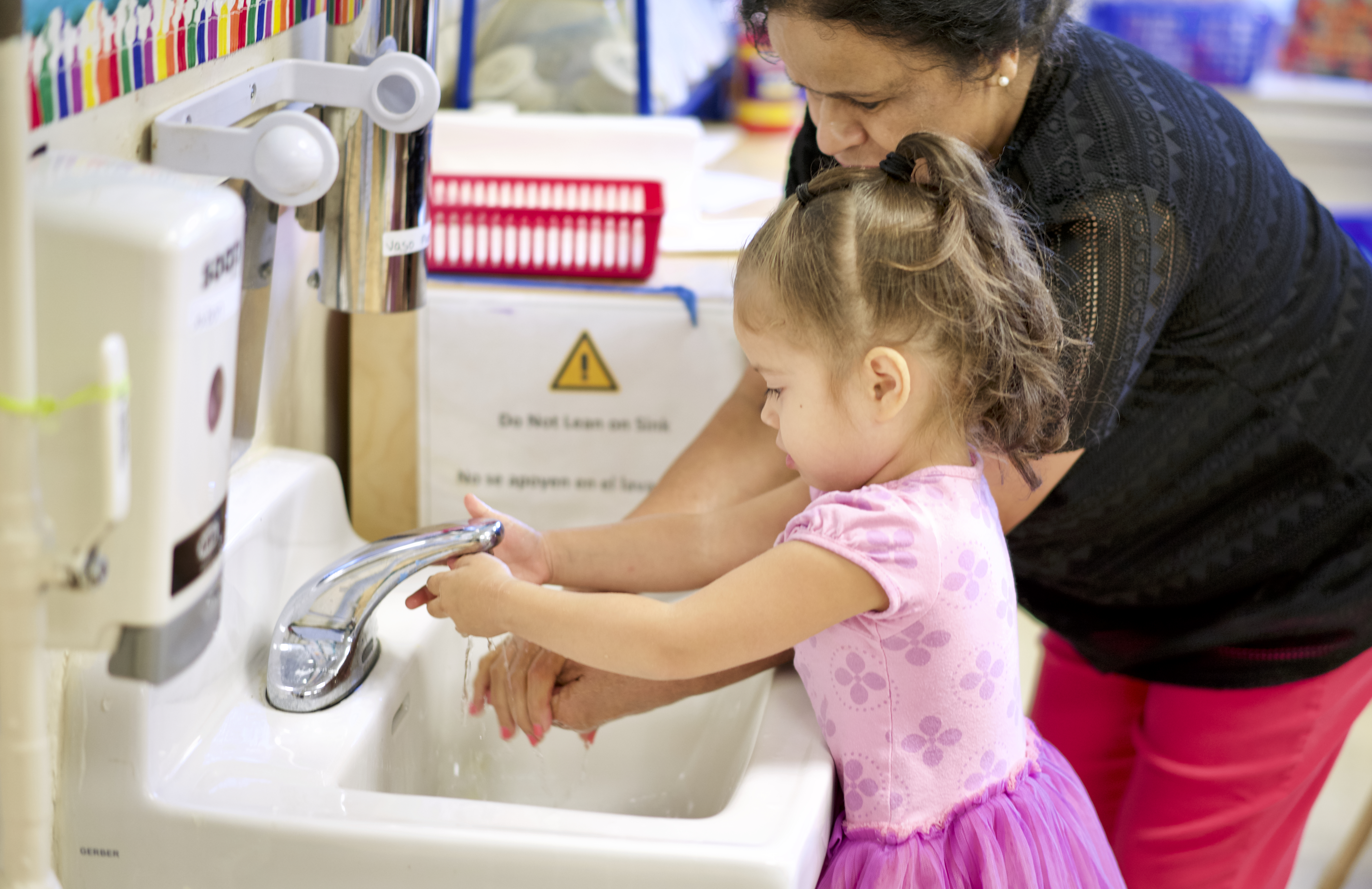 When staff, children, and families wash their hands at the right time and in the right way, illness in early childhood settings can be drastically reduced.
When staff, children, and families wash their hands at the right time and in the right way, illness in early childhood settings can be drastically reduced.
Setting up the facility to make hand-washing easy is an important way to make sure everyone washes their hands often. Hand-washing sinks in learning areas allow for supervision while staff and children wash their hands. The food preparation area should have a separate hand-washing sink. The diapering area should also be next to a sink whenever possible. Programs could consider installing sinks with a touch-free faucet and soap dispenser.
Programs should supply soap and single-use cloth or paper towels, and plain, liquid soap. The FDA does not recommend antibacterial soap because it can harm human health and the environment and is no better at preventing infectious diseases than plain soap and water. Programs can help children and staff wash hands by hanging posters on hand-washing steps and when to wash near all sinks and in food preparation, diapering, and toileting areas.
When to Wash Hands
- When arriving for the day, after breaks, and when moving from one child care group to another
- Before and after:
- Preparing food or beverages
- Eating, handling food, or feeding a child
- Giving medication or applying a medical ointment or cream where there’s a break in the skin (e.g., sores, cuts, scrapes)
- Playing in water that more than one person uses
- After:
- Using the toilet or helping a child use a toilet
- Diapering
- Handling blood and body fluids
- Handling animals or cleaning up animal waste
- Playing in sand, on wooden play sets, and outdoors
- Cleaning, or handling the garbage
- Applying sunscreen and insect repellent
How to Wash Hands
- Wet your hands and apply soap.
- Rub your hands together for 20 seconds from your wrist to your fingertips.
- Rinse hands well under running water until all the soil and soap are gone.
- Dry hands with a clean paper towel or single-use cloth towel.
- Turn off the faucet with the towel.
- Throw the paper towel into a lined, covered trash container with a foot pedal, or put the single-use cloth towel in a hamper to be washed.
Hand Sanitizer
Adults and children may use a hand sanitizer that has at least 60% alcohol on visibly clean hands when there is no place to wash hands (e.g., on a field trip). Follow the manufacturer’s directions on the product label.
Tips and Strategies Related to Hand Hygiene
- Ask families to help their child wash their hands when they arrive for the day.
- Teach children how to wash their hands to a hand-washing song that takes 20 seconds to sing.
- Have child-sized sinks or place a step stool next to the sink so children’s hands can hang freely under the running water.
- Hold infants to wash their hands under running water.
- Water temperature should be comfortable but does not need to be warm.
- Maintain sinks so they drain properly and don’t leak.
- Have hand lotion at sinks for staff, to prevent dryness and cracking from frequent hand-washing.
- Keep fingernails short; acrylic nails are not recommended because it is harder to remove bacteria from them.
- Train staff regularly on hand-washing.
- Keep hand sanitizers out of children’s reach. Carefully supervise children using hand sanitizer, and check for skin reactions.
- Make sure all staff are familiar with CFOC 3.2.2.1: Situations that Require Hand Hygiene.
Read more:
Resource Type: Article
National Centers: Health, Behavioral Health, and Safety
Audience: Directors and Managers
Last Updated: August 27, 2024